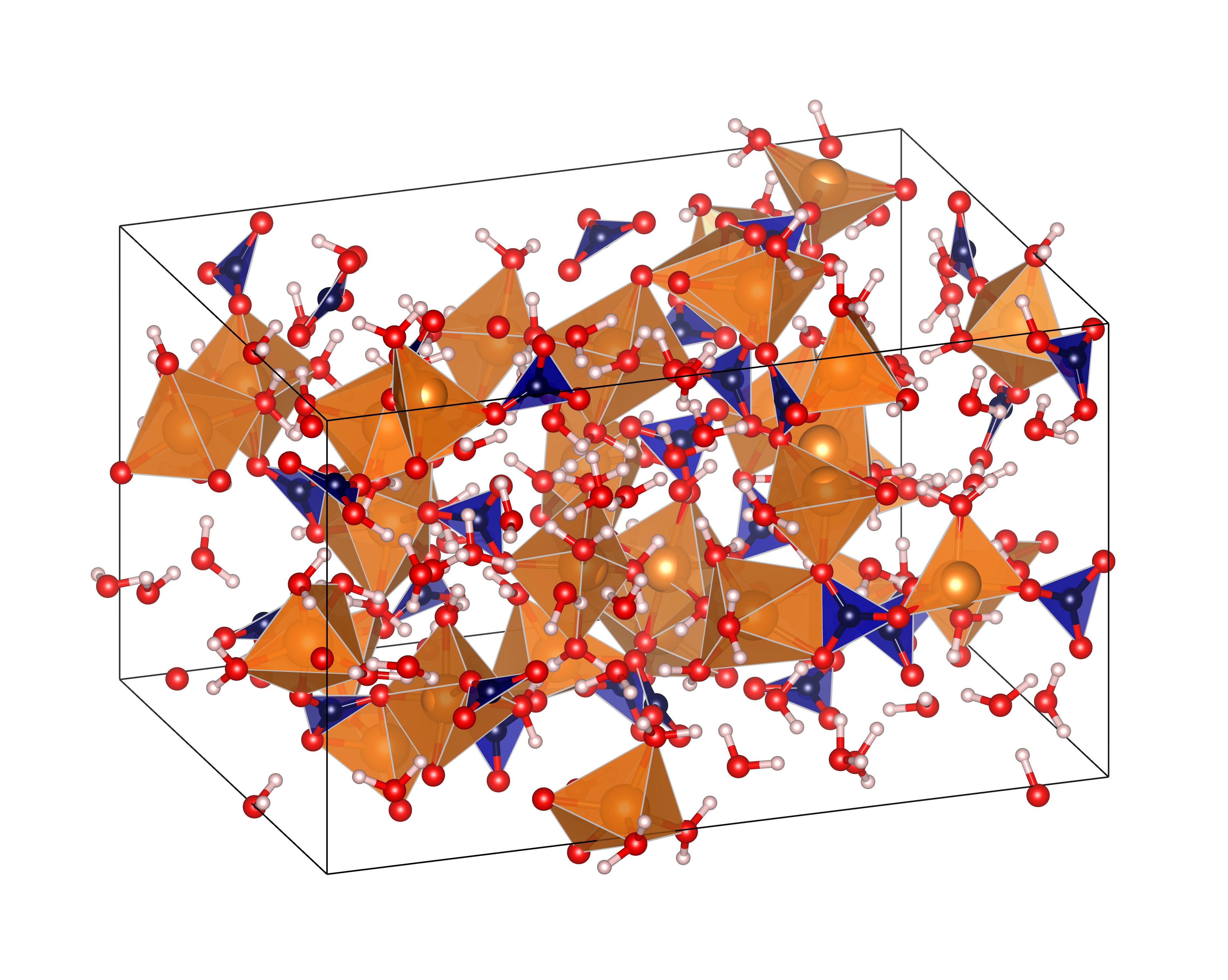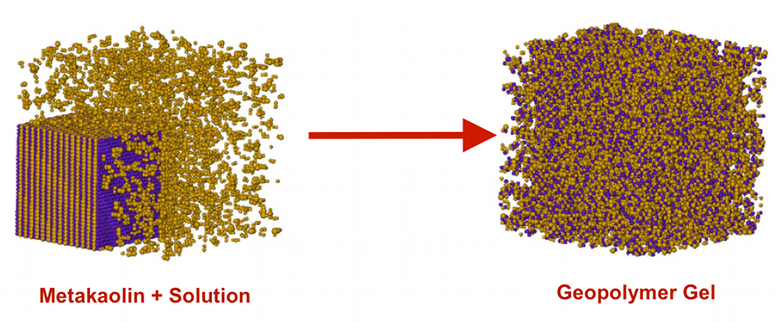Theoretical Modeling Tools
Molecular and Solid-State Density Functional Theory Calculations
Electronic structure calculations based on Schrödinger’s equation and subsequent density functional theory are used extensively in solid-state materials science research including disordered crystalline systems. Recently this theoretical modeling technique has been shown to be capable of revealing important atomic structural information for complex highly-disordered systems such as conventional cementitious materials and alkali-activated materials. Accurate comparisons with experimental data are required to ensure that these models are a true representation of reality. This is possible by combining these calculations with key experimental studies including total scattering (as mentioned above) to ensure the models are experimentally valid. Density functional theory has also been used to determine the Gibbs free energy of reaction for hydrolysis and condensation reactions that occur during formation of alkali-activated materials.

Multiscale Monte Carlo Simulations
Coarse-grained Monte Carlo simulations have been employed to model the formation of alkali-activated materials at the mesoscale, revealing important structural information regarding the mesocale morphology and changes occurring during formation. This information is almost impossible to measure experimentally, and therefore these simulation techniques play a crucial role in the development of new cement materials. By modeling the mesoscale morphology development during formation of cement systems, we can pin-point which mix designs produce more stable and denser configurations at this length scale, and correlate these results with larger length scale properties. Moreover, the nanoscale pores that develop during formation of cementitious materials are known to control permeability in a saturated body, and therefore being able to model and predict how these pores develop during the formation of a cementitious material is of great significance.

By combining modeling and experiments across length and time scales it becomes possible to successfully “engineer” materials to meet the needs of society around the globe whilst reducing the impact we have on the environment.
